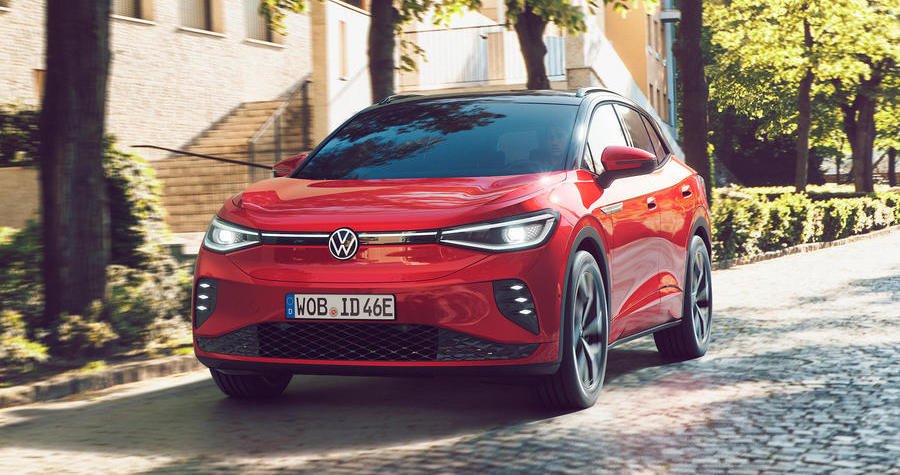Volkswagen ID.4 GTX Debuts With Nearly 300 Horsepower And AWD

Volkswagen introduced the ID.4 last fall and now it's giving the electric SUV a performance version to inaugurate the GTX badge reserved for fast EVs. Bear in mind VW has used GTX in the past for sporty Golf, Jetta, and Scirocco versions in some markets, and now it's coming back for spicy vehicles that do away with the combustion engine.
Unlike the standard ID.4 that has to make do with a single electric motor and rear-wheel drive, the GTX adds a front-mounted motor to enable an all-paw setup. Horsepower jumps from 201 hp (150 kW) to 295 hp (220 kW), which is actually slightly less than the 302-hp output offered by the dual-motor setup fitted to the China-only ID.6, a larger three-row electric SUV.
As a result of the added oomph, the 0 to 62 mph (100 km/h) has dropped from 8.5 seconds to a decent 6.2 seconds while top speed has increased from 99 mph (160 km/h) to an electronically capped 112 mph (180 km/h). Perhaps a more relevant performance number in day-to-day driving is the 0 to 37 mph (60 km/h) time of 3.2 seconds.
As expected, the VW ID.4 GTX uses an automatically adjustable AWD system as the electric SUV remains in a rear-wheel-drive configuration until the onboard sensors detect more traction is needed. AWD also kicks in when the driver decides to push the accelerator pedal harder for what the peeps from Wolfsburg describe as a "sporty driving style." The switch from rear- to all-wheel drive is done in a matter of milliseconds and VW claims it's so smooth that the driver won't even notice it.
The ID.4 GTX sits on standard 20-inch wheels upgradable to an optional 21-inch set with 358-mm brakes at the front axle. Some will be disappointed to find out the rear axle still uses drum brakes even on the performance version, but that's not all too surprising considering the posh Audi Q4 E-Tron has a similar setup.
Available at an additional cost, the optional Sports package lowers the electric SUV by 15 millimeters (0.6 inches) and adds progressive steering into the mix for spirited driving. Adaptive shock absorbers also cost extra as part of the Sports Plus package to balance sportiness and comfort. The driver gets to choose from Eco, Comfort, Sport, Individual, and Traction modes.
Tipping the scales at 1,071 pounds (486 kilograms), the 77-kWh battery is the same lithium-ion pack used by the regular ID.4. In the GTX, it offers up to 298 miles (480 kilometers) of range per WLTP. It falls short of the 323 miles (520 kilometers) delivered by the standard version, but that's to be expected taking into account the performance version is heavier after adding the front electric motor. Once battery juice is running low, fast charging at 125 kW translates to 186 miles (300 kilometers) of range in half an hour.
In regards to styling, VW has made efforts to separate the GTX derivative from its mainstream counterpart. Three-point LED lights arranged vertically in the faux air intakes are exclusive to the performance model, and so is the glossy black finish of the grille. LED matrix headlights come as standard, along with fancy LED taillights featuring a 3D effect.
Seen here is the ID.4 GTX finished in a new Metallic Kings Red paint while the red accents on the inside send a strong GTI vibe. As it makes sense on a range-topping version, it comes nicely equipped with a heated steering wheel, 30-color LED ambient lighting, individually adjustable front armrests, and split-folding rear seats. There are numerous optional packages available, adding goodies such as a head-up display with augmented reality and the upgraded 12-inch infotainment replacing the standard 10-inch screen.
Going on sale this summer in Europe, the VW ID.4 GTX will carry a starting price of €50,415 in Germany before the €7,500 subsidy.
